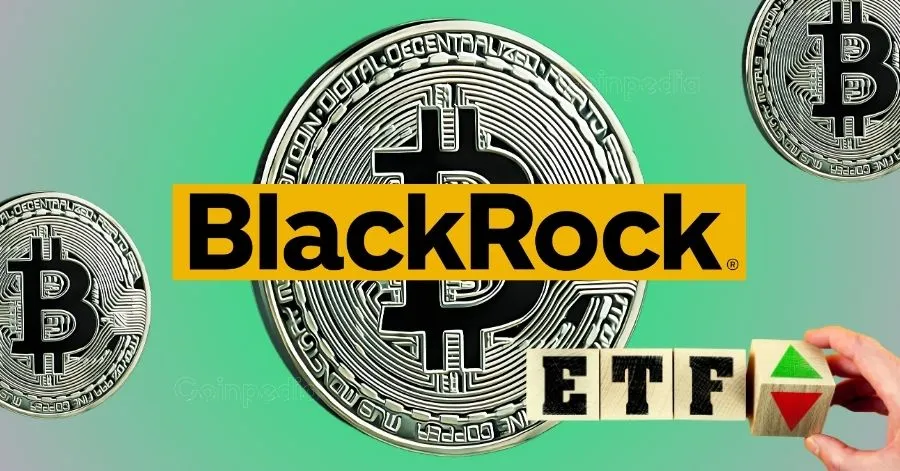The Potential Impact and Risks of a BlackRock XRP ETF: A Comprehensive Analysis
Introduction: BlackRock’s XRP ETF Speculation
The cryptocurrency market has been abuzz with speculation about BlackRock—the world’s largest asset manager with over $11.6 trillion in assets under management—planning to launch an XRP exchange-traded fund (ETF). Such a development is often seen as a significant step toward mainstream adoption of XRP and broader cryptocurrency acceptance in traditional finance. However, industry experts like Vandell Aljarrah, the co-founder of Black Swan Capitalists, caution that this potential ETF may carry hidden risks for retail investors, with benefits tilted more toward Wall Street interests rather than everyday holders.
This report unpacks the multifaceted story behind the BlackRock XRP ETF rumors, the underlying regulatory challenges, the motivations driving BlackRock’s actions, and the potential consequences for investors.
Understanding the Appeal of an XRP ETF
Exchange-traded funds focused on cryptocurrencies provide an accessible and regulated way for investors to gain exposure to digital assets without holding them directly. BlackRock entering the XRP ETF space could:
– Increase XRP’s liquidity and investor base.
– Signal regulatory validation and institutional confidence.
– Potentially drive the price higher through inflows.
For crypto enthusiasts, a BlackRock XRP ETF might look like a doorway to broader adoption, legitimization, and improved market infrastructure.
BlackRock’s Strategic and Regulatory Hesitation
While enthusiasm is warranted, a consistent voice across multiple sources identifies crucial reasons why BlackRock has been cautious or slow to file for an XRP ETF:
XRP remains embroiled in ongoing legal disputes, notably with the U.S. Securities and Exchange Commission (SEC). This uncertain regulatory environment makes XRP a risky asset for institutions known for compliance focus. BlackRock likely hesitates because it prefers assets with clear regulatory approval to avoid legal entanglements or reputational damage.
BlackRock enjoys dominance in Bitcoin and Ethereum ETFs. Entering the XRP market prematurely could jeopardize these established interests or spread their resources thin across multiple regulatory battles.
According to research and expert commentary, BlackRock performs internal risk assessments and benchmarks its filings carefully. XRP’s characteristics and ongoing scrutiny might currently fail these internal thresholds.
Expert Warnings About Risks to Retail Investors
Vandell Aljarrah and others stress caution, highlighting potential drawbacks and risks if BlackRock does launch an XRP ETF:
– ETFs May Serve Institutional Interests Over Retail:
ETFs often aggregate assets and can be manipulated or controlled by large financial players, potentially skewing market dynamics unfavorably for retail investors.
– ETF vs. Direct Ownership Utility:
Buying an ETF does not confer the same utility or control as holding XRP directly—no staking, no participation in network governance, and limited exposure to technological innovations inherent in the token ecosystem.
– Price Manipulation and Reduced Transparency:
Institutional products can reduce market transparency and amplify volatility under certain conditions, potentially leading to steep losses for uninformed investors.
– False Optimism Based on Speculation:
The hype around BlackRock’s XRP ETF plans creates speculative bubbles that may not correspond with underlying fundamentals or regulatory realities.
Ripple-SEC Legal Resolution: The Turning Point?
Many analysts view the eventual resolution of Ripple’s lawsuit against the SEC as a pivotal moment for XRP ETF prospects. Nate Geraci, President of The ETF Store and Co-Founder of The ETF Institute, has expressed optimism that after this hurdle is cleared, BlackRock and other major players will enter the XRP ETF race. The lawsuit’s end would reduce legal uncertainty and potentially trigger new filings.
Until then, firms like Grayscale, Franklin Templeton, and Bitwise forge ahead with their own applications, signaling growing institutional demand despite the regulatory cloud.
Market Reactions and Misleading Rumors
The market has seen volatility fueled by false information such as fake BlackRock filing registrations which caused sharp surges and drops in XRP price. Such misinformation underscores the need for investor vigilance in verifying news sources and understanding the actual legal and regulatory landscape before making decisions.
Furthermore, social media speculation, including wild claims about BlackRock’s secret holdings or imminent launches, often inflates expectations prematurely.
Conclusion: Navigating an ETF Landscape in Flux
The prospect of a BlackRock XRP ETF represents a watershed moment that could unlock significant institutional capital and boost crypto legitimacy. However, a number of factors complicate this narrative:
– The ongoing Ripple-SEC lawsuit and resulting legal uncertainty make an XRP ETF a complex and risky proposition.
– BlackRock’s strategic caution reflects deep consideration of regulatory risk, market positioning, and investor protection.
– Expert cautionary voices remind retail investors to differentiate between hype and reality, noting that ETFs can serve institutional investors more than the general public.
– Investors should carefully evaluate whether they seek direct XRP utility or are comfortable with the abstraction and limitations of ETF products.
In this fast-changing crypto environment, patience and informed skepticism will serve investors better than exuberant speculation. The eventual arrival of a BlackRock XRP ETF, if it happens post-legal resolutions, may indeed mark progress but should be approached with a clear understanding of the nuances and risks involved.
—
This analysis integrates various expert insights and recent developments to provide a nuanced perspective on the much-discussed BlackRock XRP ETF issue, helping investors weigh the opportunities against the complexities and caution needed in today’s market.




